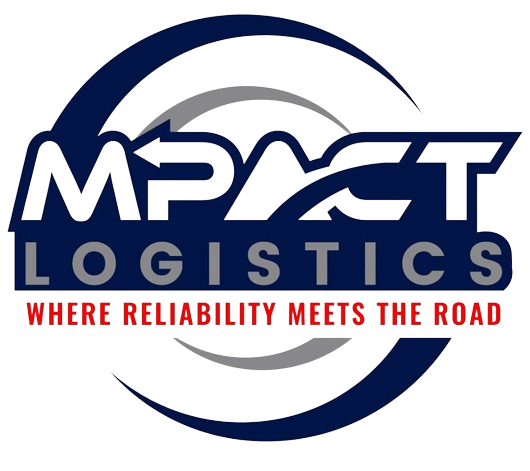In today’s logistics landscape, freight risk management isn’t just a best practice — it’s a business essential. Whether you’re a shipper, broker, or small trucking company, one unexpected delay, theft, or compliance issue can disrupt your entire operation.
The good news? With the right strategy, you can anticipate potential issues before they escalate. This checklist breaks down seven practical steps to strengthen your supply chain and protect your bottom line.
1. Understand the Types of Freight Risks
Before you can manage risks, you need to know where they come from. Freight risks can stem from natural events, equipment failure, human error, theft, or cyber threats.
For example:
Operational risks: late deliveries, damaged cargo, or miscommunication between partners. Financial risks: unexpected rate changes or contract disputes.
Compliance risks: violations of DOT or FMCSA regulations. Understanding each type helps you prioritize which risks have the biggest potential impact on your business.
2. Conduct a Comprehensive Freight Risk Assessment
Once you identify the types of risks, it’s time to assess your level of exposure.
Start by asking:
- Where are the weak points in my supply chain?
- Which routes, clients, or carriers present the most uncertainty?
- Are there backup plans in place if a shipment fails or gets delayed?
Key Steps:
Identify vulnerabilities: Look at your entire logistics flow, from pickup to delivery, to pinpoint gaps in security or communication.
Prioritize high-risk shipments: Not all cargo is equal. Items with high value, temperature sensitivity, or tight delivery deadlines deserve more attention. A formal assessment provides a foundation for all other risk management efforts.
3. Implement Preventive Measures to Minimize Losses
The most effective risk management strategy is prevention. Building proactive systems saves time, money, and reputation.
Preventive Measures:
Cargo tracking and GPS monitoring: Real-time visibility ensures you know where your freight is at all times. Packaging and labeling best practices: Properly labeled freight reduces mishandling and ensures safe transport.
Choosing reliable carriers and partners: Work with carriers who have strong compliance records, transparent insurance coverage, and proven safety practices.
When your processes are built around prevention, risk becomes easier to predict and manage.
4. Insurance and Liability Considerations
Even the best systems can’t eliminate risk entirely. That’s why having the right insurance coverage matters.
Types of Freight Insurance
- Cargo Insurance: Covers goods damaged or lost in transit.
- General Liability: Protects your company from legal claims or accidents.
Freight Broker Bonds (BMC-84): Required for brokers to ensure payment and compliance. Before signing a contract, confirm that all parties have proper coverage. A single oversight can expose your company to massive losses.
5. Develop Contingency Plans for Freight Disruptions
When things go wrong, sometimes they will, a contingency plan minimizes downtime.
Key Steps
- Alternate routes and backup carriers: Build relationships with multiple carriers or rerouting options in case of emergency.
- Emergency response planning: Define clear roles and communication channels for your team when a disruption occurs.
Think of contingency planning as your safety net, it keeps freight moving even when the unexpected happens.
6. Monitor and Review Freight Performance Regularly
Risk management isn’t a one-time project, it’s an ongoing process.
Best Practices
- Set KPIs: Track delivery times, incident rates, and claim frequency to gauge efficiency and safety.
- Analyze incidents and near-misses: Every issue, big or small, provides insight into process improvement.
Commit to continuous improvement: Regularly update procedures, retrain staff, and upgrade systems to stay ahead of risk trends. Companies that monitor performance closely are more agile and resilient when challenges arise.
7. Leverage Technology to Enhance Freight Risk Management
Technology is the backbone of modern logistics and it’s transforming risk management.
Smart Tools to Use
Freight management systems & AI-based prediction: Use AI to identify shipment delays, potential theft zones, or maintenance needs before they occur.
Real-time monitoring & reporting: Digital dashboards can alert you instantly to route deviations or compliance breaches. By investing in tech solutions, small and mid-size carriers can compete at enterprise-level efficiency.
Conclusion: Stay Proactive, Stay Profitable
Freight risk management doesn’t have to be overwhelming. When you break it down into these seven steps, you create a repeatable system that safeguards your operations and your reputation.
In 2026, the logistics companies that succeed will be those that combine smart planning, technology, and continuous improvement.
At MPact Logistics, we help small trucking companies and brokers strengthen their back-office operations, improve compliance, and minimize risk so they can focus on growth.
Ready to assess your freight risk strategy?
Partner with MPact Logistics for a customized Freight Risk Audit and discover how to protect your supply chain from the inside out.
